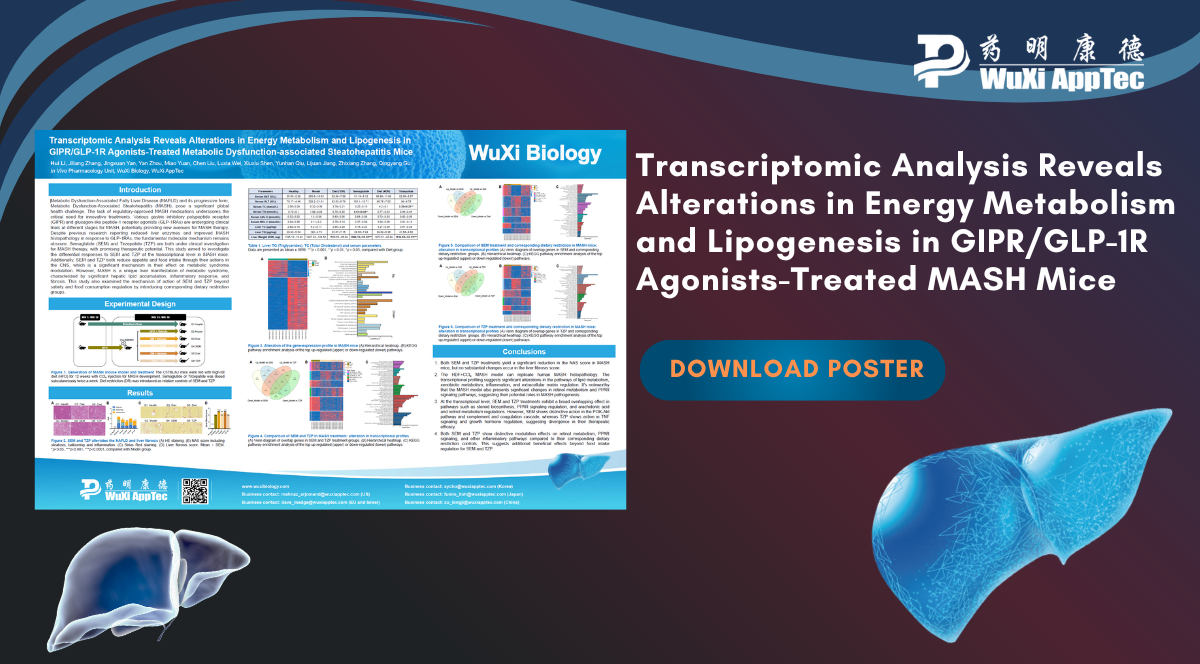Alterations in Energy Metabolism and Lipogenesis in GIPR/GLP-1R Agonist-Treated MASH Mice

Metabolic Dysfunction-Associated Steatohepatitis (MASH) is a severe form of Metabolic Dysfunction-Associated Steatotic Liver Disease (MASLD). MASH is a growing public health concern due to its increasing prevalence, driven by factors like obesity, type 2 diabetes, and metabolic syndrome. MASH can progress to advanced liver scarring (fibrosis) and cirrhosis, increasing the risk of liver cancer and requiring liver transplants.
At the EASL 2025 Congress, WuXi Biology presented a poster describing a study investigating the differential responses to semaglutide (SEM) and tirzepatide (TZP) at the transcriptional level in MASH mice. SEM and TZP treatments significantly reduced the NAFLD activity score (NAS) in MASH mice, but no substantial changes occurred in the liver fibrosis score. Transcriptional profiling suggests significant alterations in the pathways of lipid metabolism, xenobiotic metabolism, inflammation, and extracellular matrix regulation. This MASH model also shows significant changes in retinol metabolism and PPAR signaling pathways, suggesting their potential roles in MASH pathogenesis.

EASL 2025 Poster_Alterations in Energy Metabolism and Lipogenesis in MASH Mice
Related Content
Metabolic dysfunction-associated steatohepatitis (MASH), previously known as nonalcoholic steatohepatitis (NASH), is a serious liver disease. If left untreated, MASH can...
VIEW RESOURCEIntroduction: OncoWuXi Express will continue to keep you informed about updates to our online pharmacology model database (OncoWuXi Database), as...
VIEW RESOURCE
